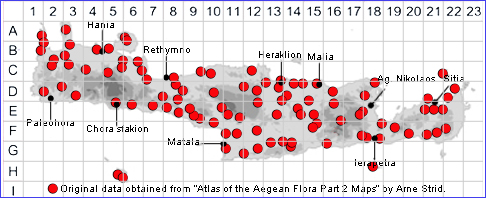SPECIES DESCRIPTION
MORAEA SISYRINCHIUM
Family and Genus:- See- IRIDACEAE
Common Names:- Barbary-nut
Homotypic Synonyms:- Diaphane edulis, Gynandriris sisyrinchium,
Helixyra sisyrinchium, Iris collina, Iris sisyrinchium, Xiphion sisyrinchium.
Meaning:- Moraea (L) For R. Moore English botanist.
Sisyrinchium (Gr) Pig-snout, a name used by the Greek philosopher
Theophrastus for iris.
General description:- Variable, low to medium, cormous perennial, 10-30(-45) cm.
Corm:-
1) 15-30 mm diam, globose, surrounded by numerous tunics, the outer coarsely
fibrous.
Leaves:-
1) Few, often 1-2, deep green, canaliculate,10-50 cm x 1·5-5 mm, often longer than
the pedicel.
Flower:-
1) Fugitive, in 1-4 compact cymes, each with 1-6 flowers.
2) Spathes, 4-6 cm, scarious.
3) Perianth, violet-blue to purple.
4) Falls, c. 30 x 10 mm, with an elliptic-obovate limb, with a white or yellow patch.
5) Standard, c. 25 x 5 mm, with a slender, canaliculate claw and lanceolate limb.
6) Style-branches, suberect, deeply divided at the tip in two (2-fid).
7) Beak of ovary 20-30 mm, very slender.
8) Bracts, up to 4 pairs, each enclosing several flowers, scarious.
Fruit:-
1) Capsule, (excluding beak) 20 x 4 mm.
2) Seeds, 1·5 mm, pyriform, brown.
Habitat:- Rocky hillslopes with open dry shrubby vegetation, olive groves, often in
trampled soil along tracks. 0-600(-1100) m. (occasionally to 1400 m. in dolines).
Distribution:- Widespread and common throughout the Mediterranean. Widespread
and common on Crete.
Flowering time:- Late Feb to early June.
Photos by:- Steve Lenton

